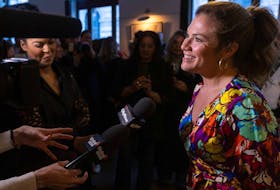Movies, like life, are watched forward but best understood backwards. In one of the final lines in this astonishing new film from first-time feature director Joe Talbot, the lead character is riding a bus when he overhears two women denigrating San Francisco. He says they’re not allowed. They demand to know what he means.
“Do you love it?” he asks them. “You don’t get to hate it unless you love it.”
You don’t have to be black, or a man, or a San Franciscan, to understand. Whether it’s Winnipeg winters, Vancouver traffic or Toronto, well, everything, you can bitch about it from within, but heaven help anyone who complains about it from without. The line echoes back through the movie, but outside it as well.
Jimmie Fails (the character has the same name as the first-time actor, who drew from his own life to co-write the screenplay with Talbot) is a black man living in the rapidly gentrifying Bay Area, making this part of a micro-trend of movies from the region, including Sorry to Bother You and Blindspotting. Barry Jenkins (Moonlight) touched on similar themes in his first feature, 2008’s Medicine for Melancholy, which Talbot and Fails list as a touchstone.
Jimmie, accompanied by his best friend Montgomery (Jonathan Majors), obsessively visits an old house in the city’s Fillmore District — near the Golden Gate Bridge, but notably without a view of it. He doesn’t live there anymore, but his family used to, and in spite of its century-old appearance, he swears his grandfather built the place in the 1940s. His fixation extends to touching up the paint job when the current owners are out.
When that couple divorces and moves away, Jimmie senses as opportunity to reclaim his heritage. Montgomery, busy writing a play with the same title as the movie, tags along to offer moral support and a voice of reason whenever Jimmie’s dreams threaten to overwhelm his better judgment.
Talbot gives the movie a listless, looping quality that is best embodied in the scenes of Jimmie roaming around town on his skateboard; when the camera catches him from afar, gliding down the city’s steep streets, he looks more like a surfer than a skater. We also get domestic scenes of Jimmie and Montgomery watching old movies with Danny Glover, who continues to rack up great grandfather roles in his 70s.
“Before the black thing, this was all Japanese,” says a Segway-riding guide to an (all-white) tour group, stopping in front of the house; Jimmie takes it upon himself to school the man about its actual history, but we’ve already started to doubt whether his version is completely true. But maybe that doesn’t even matter. It’s home. You’ve got to love it.
Copyright Postmedia Network Inc., 2019







